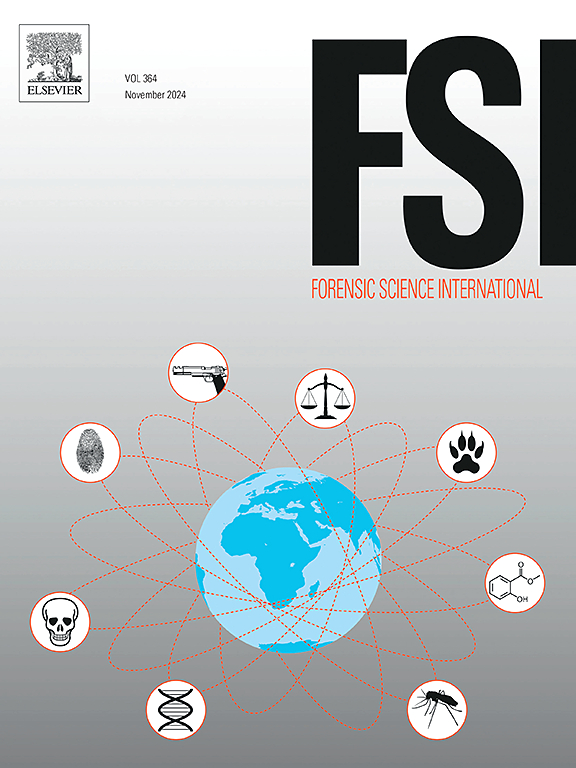泛基因组时代法医人类、动物和植物整合基因组学的前景和机遇。
IF 2.2
3区 医学
Q1 MEDICINE, LEGAL
引用次数: 0
摘要
人类泛基因组参考联盟、中国泛基因组研究联盟和其他动植物泛基因组项目宣布完成了构建高质量、单倍型解析参考图谱基因组的试点工作,这些基因组代表了全球不同民族语言的不同种群或不同动植物物种。这些基于图的、无间隙的泛基因组参考文献,具有丰富的基因组多样性、完整性和连续性,具有增强基于长读测序(LRS)的基因组研究的潜力,以及提高传统短读测序平台的可绘制性和变异基因分型。我们全面讨论了在法医相关物种(人类、动物和植物)中基于泛基因组的基因组整合基因组发现的进展,并总结了它们在变异鉴定和法医基因组学、表观遗传学、转录组学和微生物组学研究中的应用。多路阵列测序的最新发展引入了一种高效的可编程技术,以克服LRS平台中法医标记长度短的限制。该技术能够将短RNA转录物和DNA片段连接成lrs最佳分子,用于测序,组装和基因分型。新的泛基因组参考坐标和相应的计算算法的集成将有利于法医整合基因组学,促进新的标记识别,准确的基因分型,高分辨率面板开发和统计算法的更新。这篇综述强调了整合基于lrs的平台、基于泛基因组的研究设计和基于图的泛基因组参考在短读图谱和基于lrs的创新中实现精确法医学的必要性。本文章由计算机程序翻译,如有差异,请以英文原文为准。
Perspectives and opportunities in forensic human, animal, and plant integrative genomics in the Pangenome era
The Human Pangenome Reference Consortium, the Chinese Pangenome Consortium, and other plant and animal pangenome projects have announced the completion of pilot work aimed at constructing high-quality, haplotype-resolved reference graph genomes representative of global ethno-linguistically different populations or different plant and animal species. These graph-based, gapless pangenome references, which are enriched in terms of genomic diversity, completeness, and contiguity, have the potential for enhancing long-read sequencing (LRS)-based genomic research, as well as improving mappability and variant genotyping on traditional short-read sequencing platforms. We comprehensively discuss the advancements in pangenome-based genomic integrative genomic discoveries across forensic-related species (humans, animals, and plants) and summarize their applications in variant identification and forensic genomics, epigenetics, transcriptomics, and microbiome research. Recent developments in multiplexed array sequencing have introduced a highly efficient and programmable technique to overcome the limitations of short forensic marker lengths in LRS platforms. This technique enables the concatenation of short RNA transcripts and DNA fragments into LRS-optimal molecules for sequencing, assembly, and genotyping. The integration of new pangenome reference coordinates and corresponding computational algorithms will benefit forensic integrative genomics by facilitating new marker identification, accurate genotyping, high-resolution panel development, and the updating of statistical algorithms. This review highlights the necessity of integrating LRS-based platforms, pangenome-based study designs, and graph-based pangenome references in short-read mapping and LRS-based innovations to achieve precision forensic science.
求助全文
通过发布文献求助,成功后即可免费获取论文全文。
去求助
来源期刊

Forensic science international
医学-医学:法
CiteScore
5.00
自引率
9.10%
发文量
285
审稿时长
49 days
期刊介绍:
Forensic Science International is the flagship journal in the prestigious Forensic Science International family, publishing the most innovative, cutting-edge, and influential contributions across the forensic sciences. Fields include: forensic pathology and histochemistry, chemistry, biochemistry and toxicology, biology, serology, odontology, psychiatry, anthropology, digital forensics, the physical sciences, firearms, and document examination, as well as investigations of value to public health in its broadest sense, and the important marginal area where science and medicine interact with the law.
The journal publishes:
Case Reports
Commentaries
Letters to the Editor
Original Research Papers (Regular Papers)
Rapid Communications
Review Articles
Technical Notes.
 求助内容:
求助内容: 应助结果提醒方式:
应助结果提醒方式:


